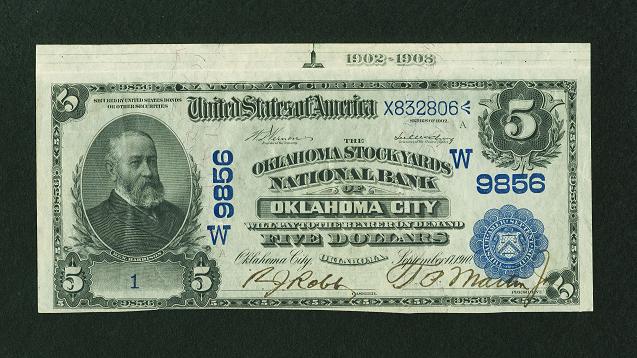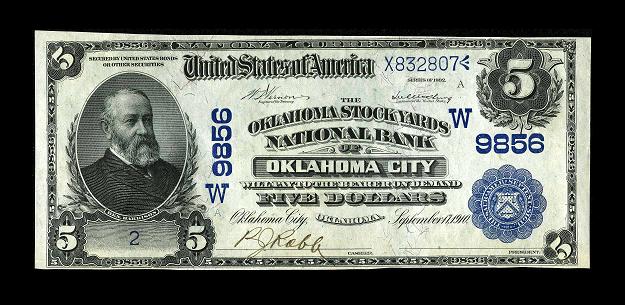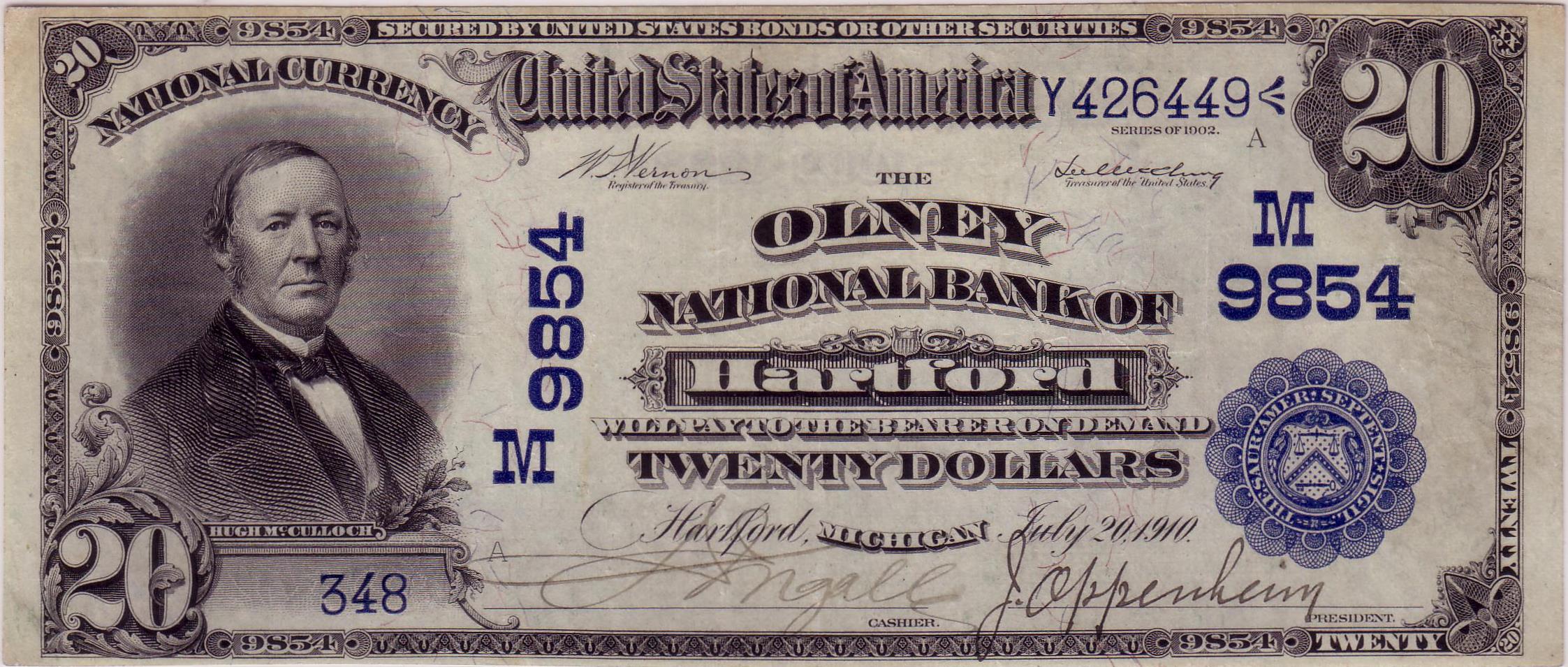I would have to say that Date Backs (both 1882 and 1902) are my favorite types of large size replacement nationals. That’s because as replacements they’re scarcer than most other types, yet they’re less expensively priced compared to other types when they come up for sale. Further, there is no ambiguity about when you find one with the old style font. Recall that for Red Seals and Brown Backs, the earliest of those used the old style serial number fonts, and you need to do a little homework to determine the date of printing. By contrast, any Date Back with the old style font is a replacement, period.
Number one 1902 Date Backs were not saved in the same ratio as #1 Red Seals. Nearly 10% of all the Red Seals in the census are #1 notes, while the proportion for Date Backs is less than 2%. Still, #1 notes constitute a significant share (nearly 75%) of the known Date Back replacements. Here are the statistics for 1902 Date Backs:
| Data through 8/31/2012 | $5 | $10 | $20 | $50 | $100 | Total |
| 02DB #1 Notes | 4 | 10 | 0 | 0 | 0 | 14 |
| 02DB Not #1 | 0 | 3 | 1 | 1 | 0 | 5 |
| 02DB Total | 4 | 13 | 1 | 1 | 0 | 19 |
| Overall Total for All Types | 42 | 31 | 6 | 1 | 0 | 80 |
In our article we state that we had found two pairs of notes (one replacement, one normal) printed from the same run and plate position. Since that time I've found a few more. The following very neat pair of notes is from Heritage’s archive of currency auctions (www.ha.com):


These are the #1 and #2 notes from the A position. The #1 note is a replacement, while the #2 note is a normal production note. The differences in the 2 and 3 in the Treasury serial are the most telling, but there is also a subtle distinction between the symbols following the serial.


Next week we'll cover 1882 Date Backs.



